Our Verdict
Despite a capricious early game, Astrea is a very pretty, refreshing & tense spin on the tried-and-true deckbuilder.
PC Gamer's got your back
I’m no risk-taker (or so I like to tell myself), and yet I have spent the past few days making extremely poor decisions with dice. Fortunately my errors in judgment haven’t bankrupted me, but they sure have led a long procession of adorable cartoon critter-folk to their cosmic doom. Astrea: Six-Sided Oracles, the debut game from Brazilian studio Little Leo Games, is an experimental take on the deckbuilding roguelike that might just make a gambler out of me.
What is it?: A dicey deckbuilder with an astral magic theme
Expect to pay: TBA
Release date: September 21, 2023
Developer: Little Leo Games
Publisher: Akupara Games
Reviewed on: Windows 11, Nvidia 4090, Intel i9-13900k, 64gb DDR5 RAM (Also Steam Deck)
Steam Deck: TBA
Multiplayer?: None
Link: Official site
Aesthetically Astrea makes a very strong first impression. Set in a slightly dreamlike world of astral mages and eldritch corruption, there’s a wide assortment of cute animal-people to play as, including well-dressed sharks, bees and (my personal favorite) robot crocodiles clad in swish wizardly robes, battling against warped ‘corrupted’ versions of their kith and kin.
While 2D animation is used sparingly on the watercolor backdrops and character art (featuring a lovely light palette of blues, reds and little inbetween), everything bobs and weaves with excited anticipation. The soundtrack, while perhaps a tad generic and orchestral, still has some memorable melodies. I didn't get sick of them, anyway, important for a game built on repetition.
Astrea’s structure is nigh-identical to deckbuilding trailblazer Slay The Spire, but makes the moment-to-moment combat a very different experience by trading cards for dice. Each of the six playable characters (though I’ve yet to unlock the hidden sixth, along with the true endgame) has their own radically different gimmick and set of dice to pick as rewards for progressing across the branching campaign map.
Dice are broadly split into three categories: Safe (all six sides are likely positive, if minor in their effect), balanced (3-4 sides are good, with some risks) and risky (2-3 sides are positive, but can be incredibly powerful). Finding the right balance is key to survival. Early foes can be whittled down with safe dice, plinking away with one or two damage per die, but later enemies become more powerful as a fight drags on.
If given a chance to bulk up, some monsters can do enough damage to kill you three times over, forcing you to rely on dice that only come up good on two of six faces, but can do potentially dozens of points of damage.
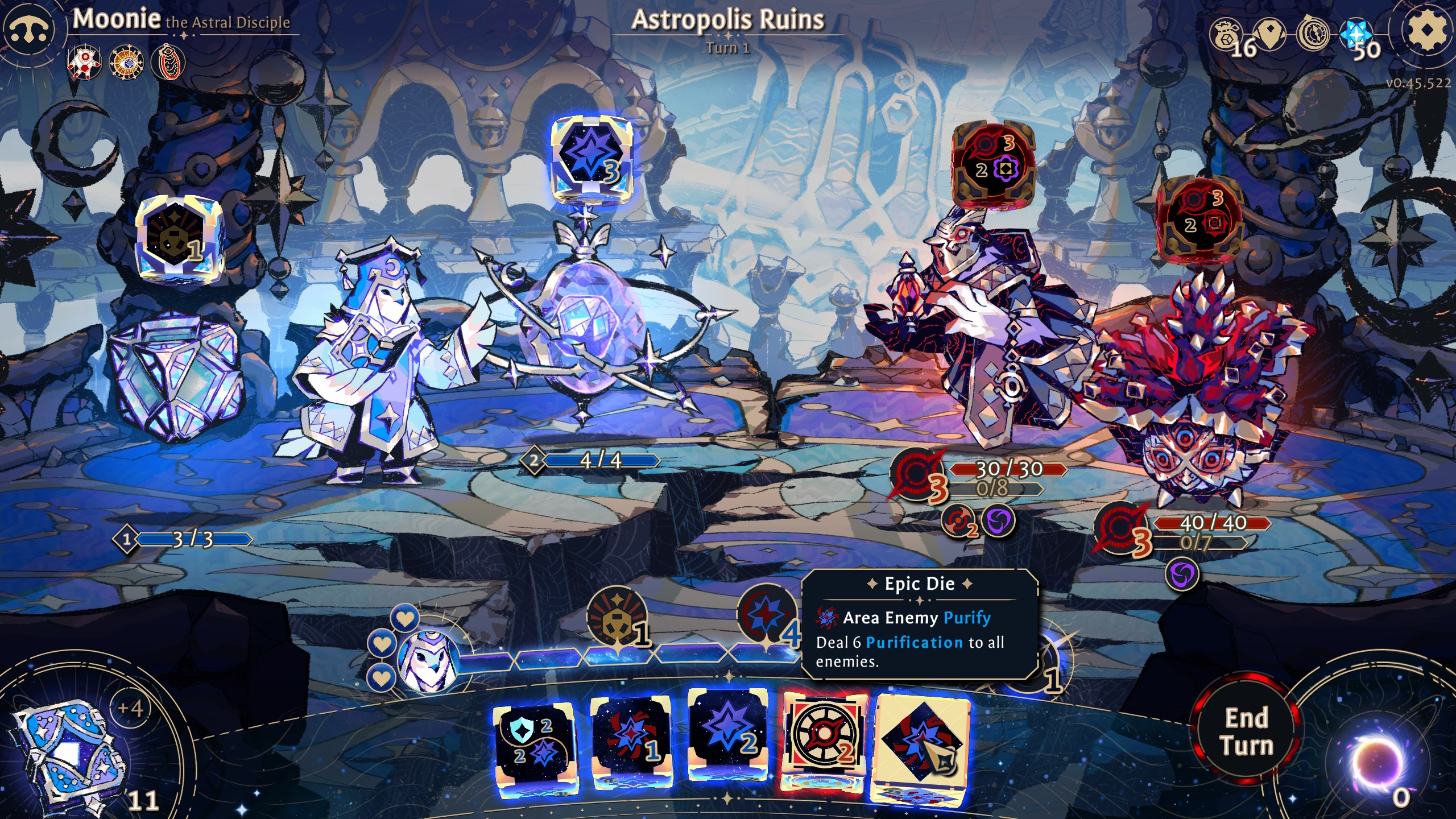

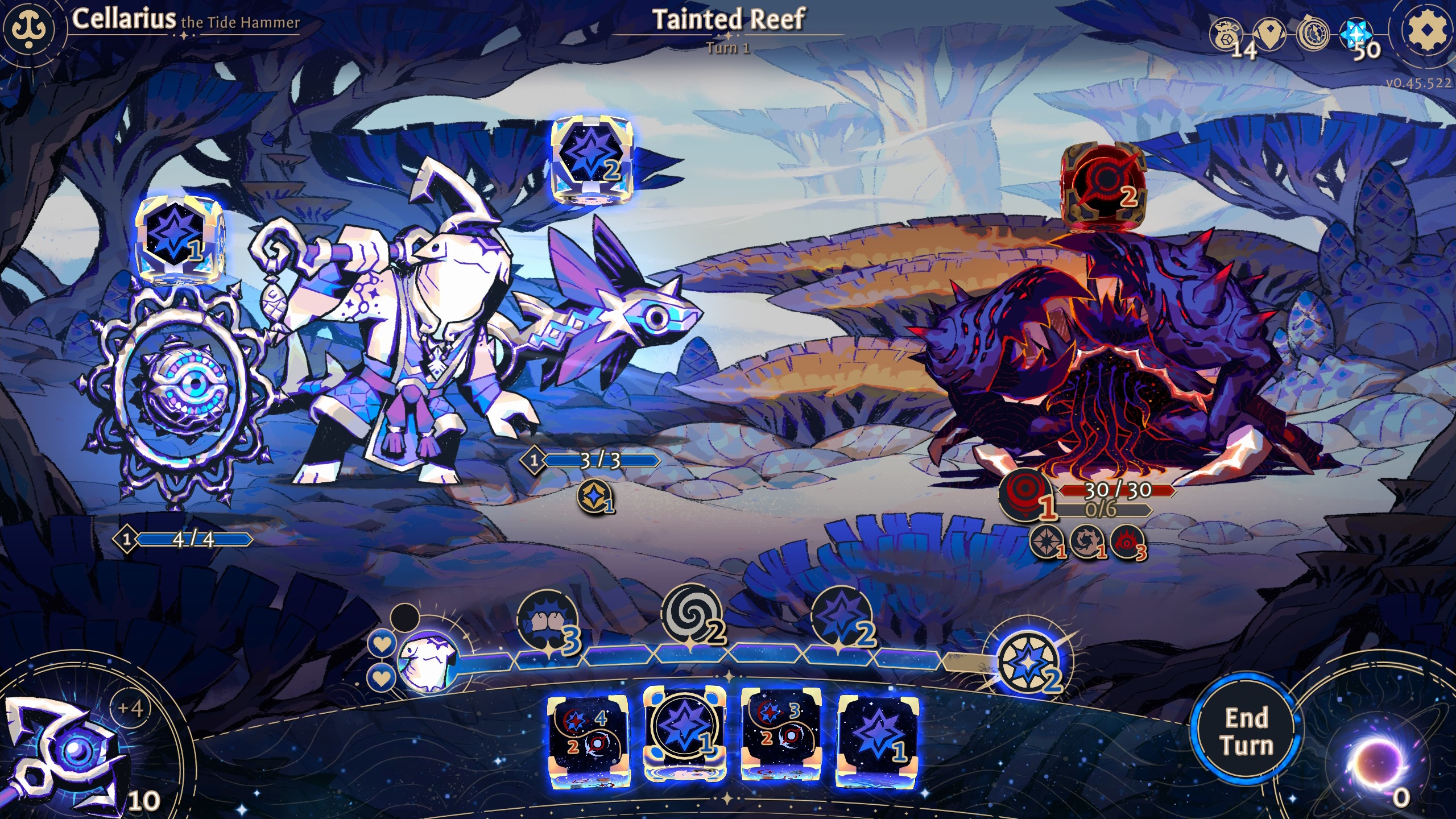
It makes for an exciting dynamic, pushing me to take risks but also plan enough to reduce the chances of destroying myself. While the dice may not have the fancy art of card-based deckbuilders, they feel mechanically and thematically distinct, and rolling them is always fun. Each turn, everyone’s dice (friend and foe) get thrown haphazardly around the screen before being tidily swept up into their spot on the screen.
Keep up to date with the most important stories and the best deals, as picked by the PC Gamer team.
Each individual die face has a huge assortment of possible powers, from basic damage or healing to complex interactions involving stacking debuffs, resource burning and even time-bending shenanigans. The one rule that’s most important is that while you can safely discard unwanted positive actions, negative ones in your hand MUST be played if you’ve got no other way to disable or reroll them. Sometimes you’ll just have to smack yourself in the face with some corruption damage, or heal an enemy, and that makes risk mitigation and keeping a reroll or two in your back pocket absolutely crucial.
There’s only so far that rerolls can take you, though, and that’s compounded by the unusual but exciting way Astrea handles health. While enemies can have health pools stretching into the hundreds, you’ll never have more than seven, and damage is frequently unavoidable. Within a single turn before enemies have even acted, I sometimes found myself swinging between one and seven health several times. Often intentionally.
Astrea hinges on an ingenious system called Virtues, abilities intrinsic to each character that become usable as you take Corruption damage. These abilities can sometimes drag you out of trouble (most characters have a ‘reroll’ virtue usable on any dice, including enemies), but they’re a reliable way of dealing damage, meaning that you’ll be whalloping yourself with a nasty die, firing off your Virtues, and healing back before the opponent has time to act. If you planned right.
If not, you can end up being knocked over by a small breeze, or just plain blowing yourself up.
It’s always a tense tightrope walk, and it creates a thrillingly ‘swingy’ game where things can go wrong almost instantaneously if you don’t plan two moves ahead. The saving grace is that most characters have three lives (restored when beating a region’s end boss), preventing a single miscalculation from spoiling a whole run. But those lives can be wagered for permanent upgrades, another temptation I found turning me into a gambler.
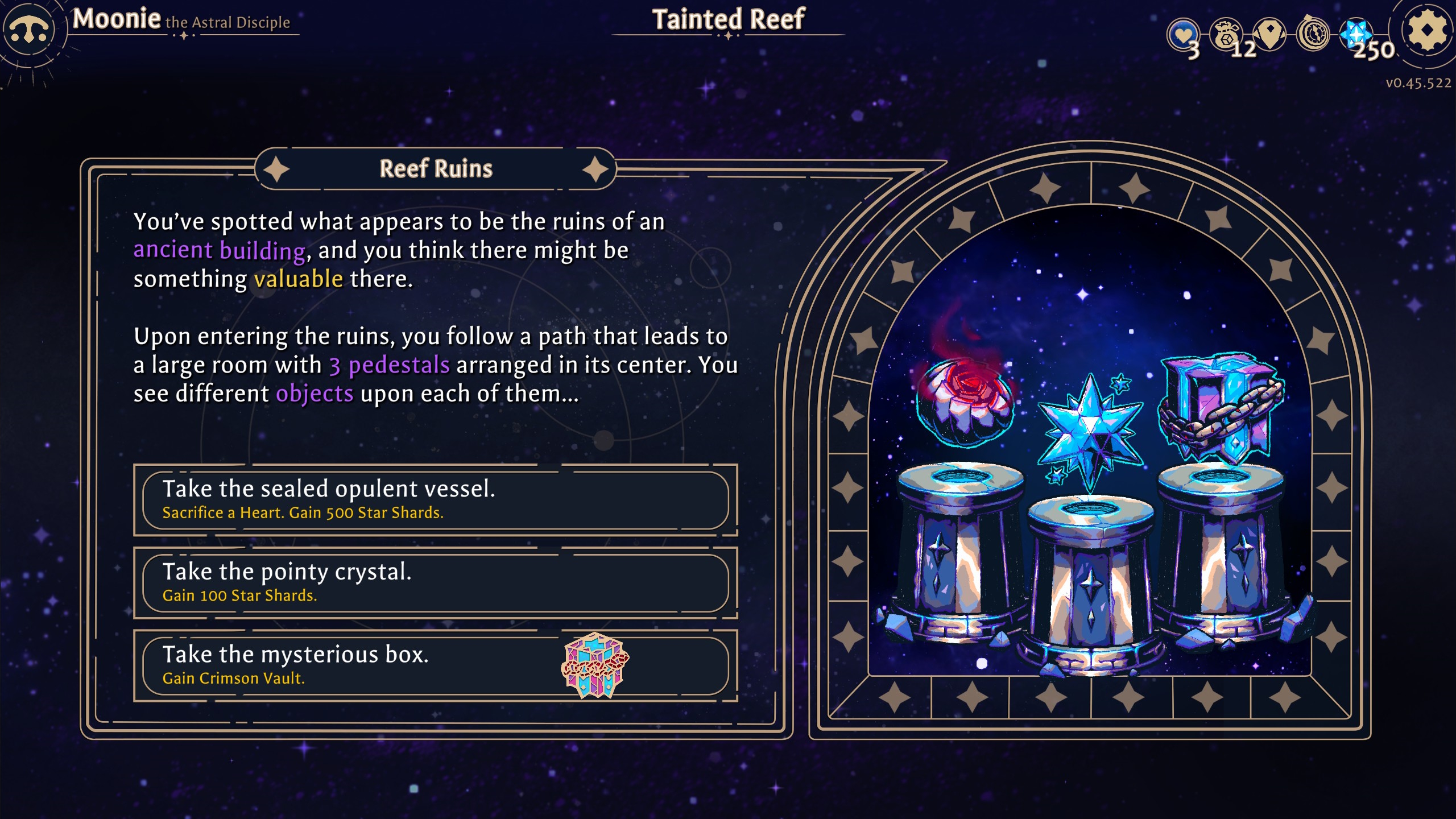
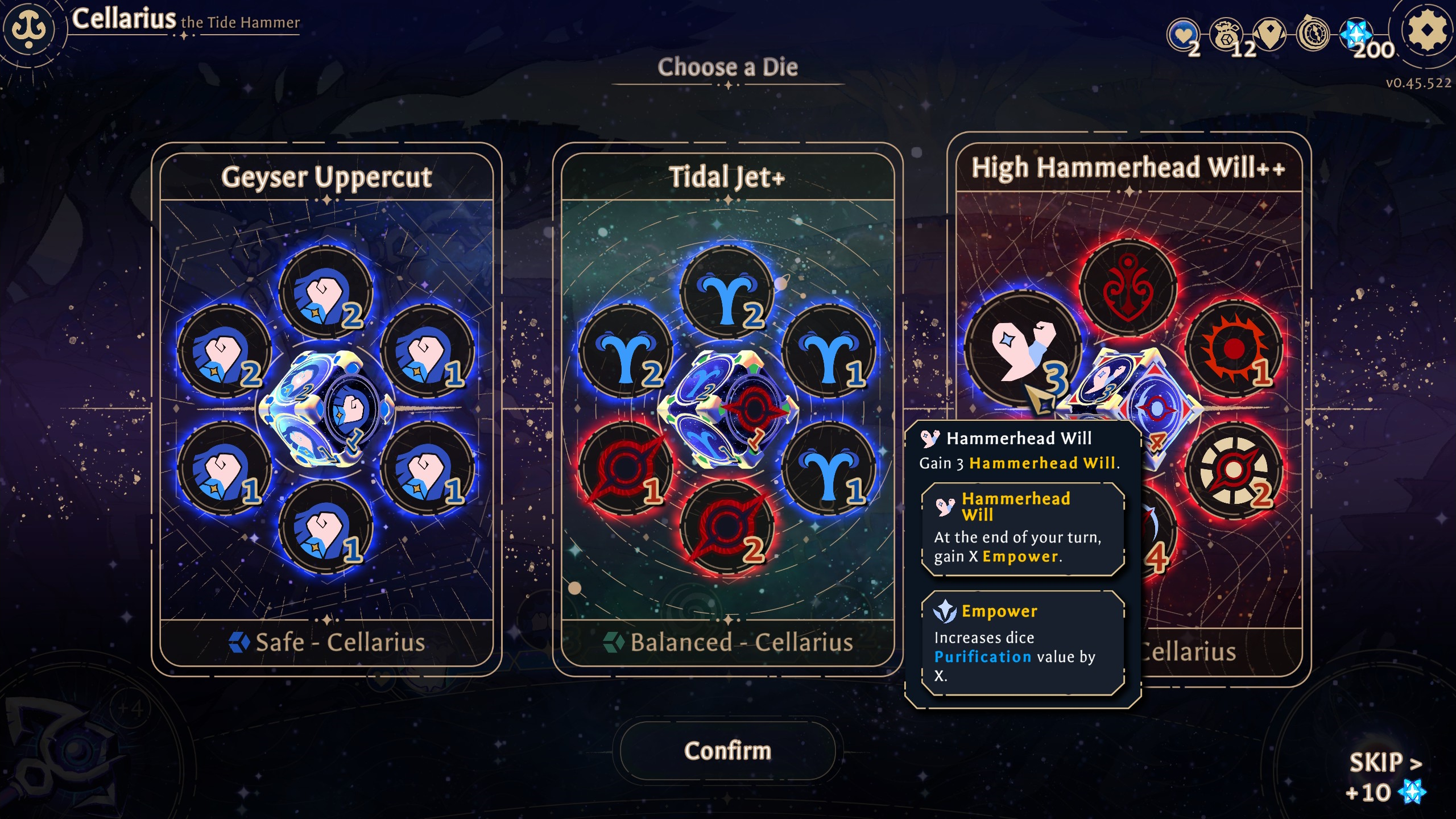
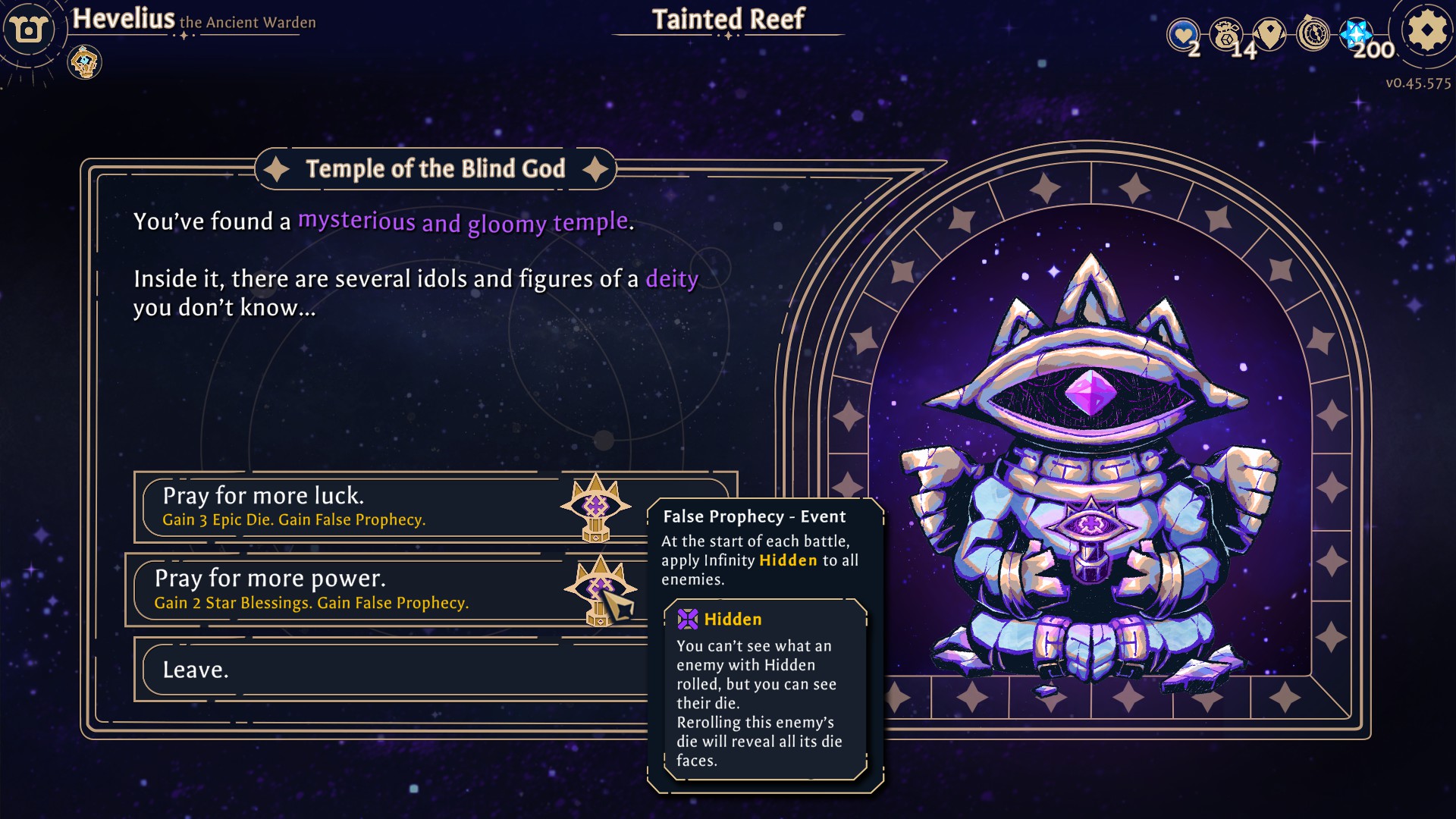
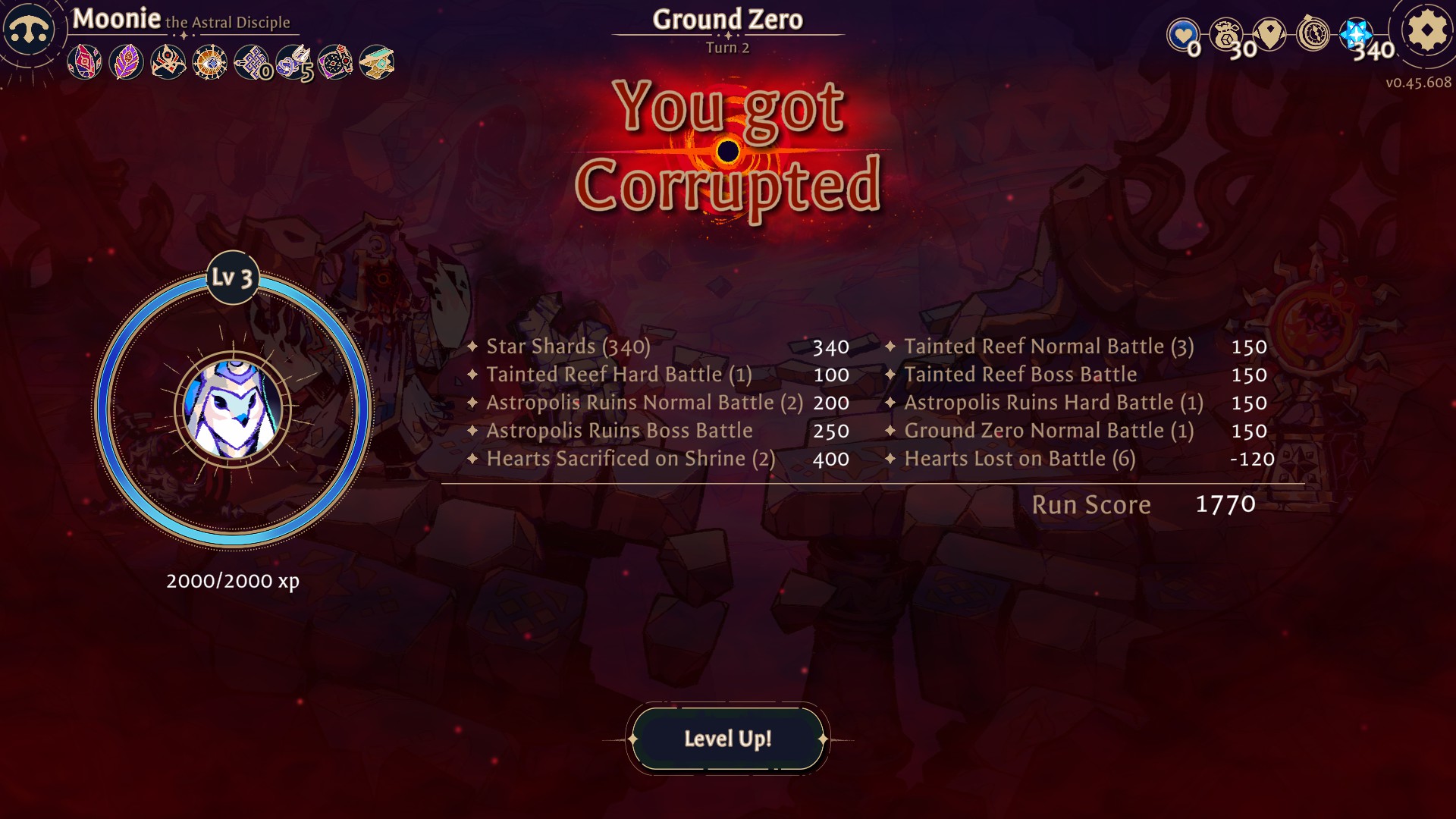
The result is a deckbuilder where almost every single turn is engaging and often butt-clenching. Good strategy and tactics got me 70% of the way there, but 30% of it was luck and gut feeling. The amount of chance does vary between characters, each of which have wildly different play-styles, their own dice libraries and unlocks slowly unfurling as you gain XP from successful (or partial) runs. Much like Slay The Spire, each run has you building up a deck of tools and artifacts that tend to hint towards a specific playstyle, but each character has enough gimmicks available to make multiple approaches viable. More exotic dice unlock across multiple playthroughs without diluting the essential flavor of each hero.
Of the five I’ve unlocked so far, I’ve found the most luck with Hevelius, a robo-crocodile, who starts a run with two Sentinel drones (something that other characters need to buy or collect from beating bosses) that his unique dice can systematically buff and control, or interact with in wackier ways. He’s the only character with a Virtue that forces him to cause corruption damage if it activates, setting up a great potential combo: to clobber your own Sentinels after outfitting them to emit a healing pulse when damage, then fixing them back up with a repair die.
Intentionally harming yourself is less of an issue for my favorite, Austra the bumblebee, who embraces chaos with random chances to dodge attacks, score huge critical hits or wildly target anything on the field. When she does target directly, she has to flip a coin to decide whether the attack heals or harms. A character for those playing lucky instead of smart, and exceptionally capable of embarrassing self-ownage, but also the only character I’ve one-shot bosses with.
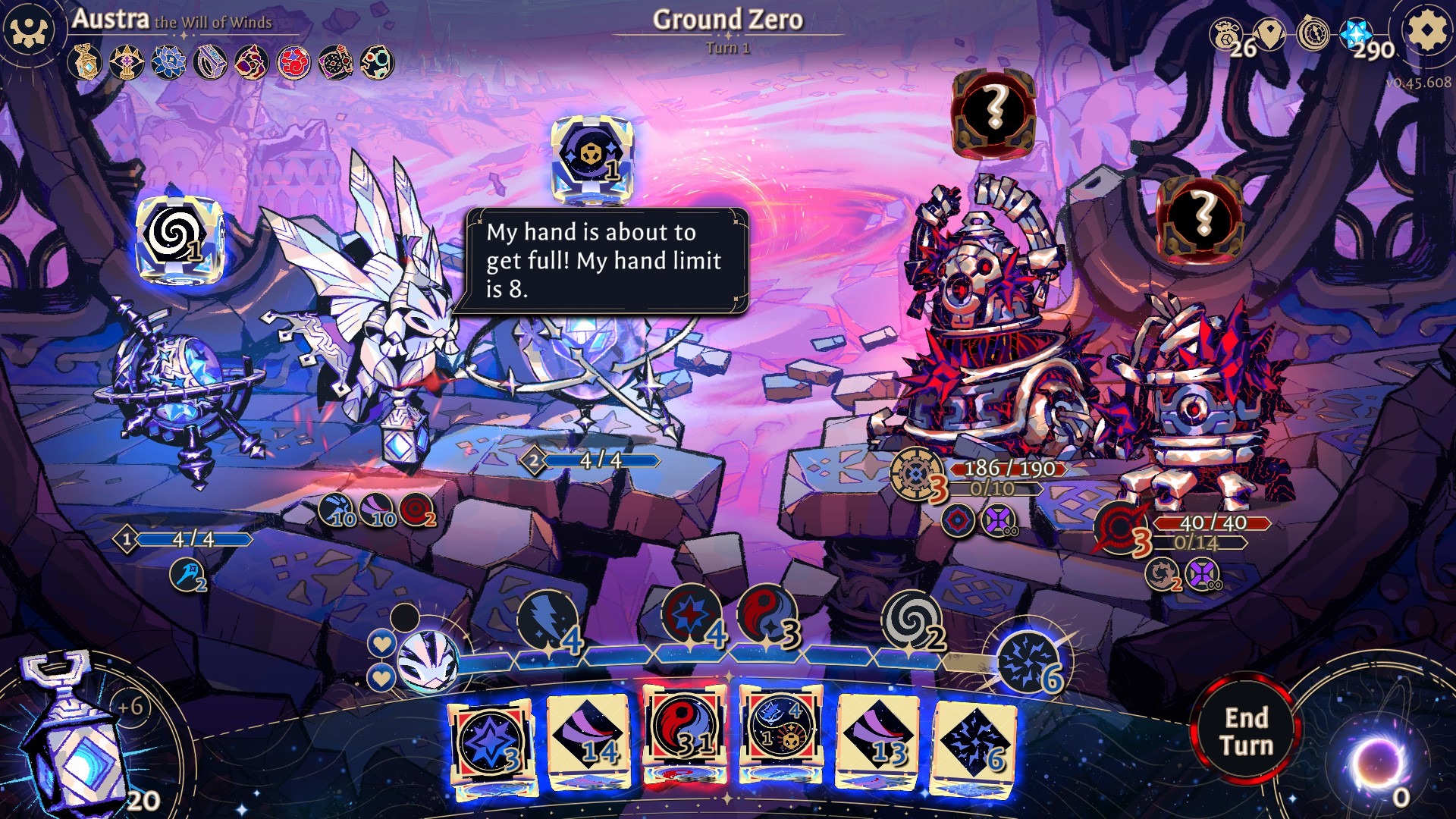
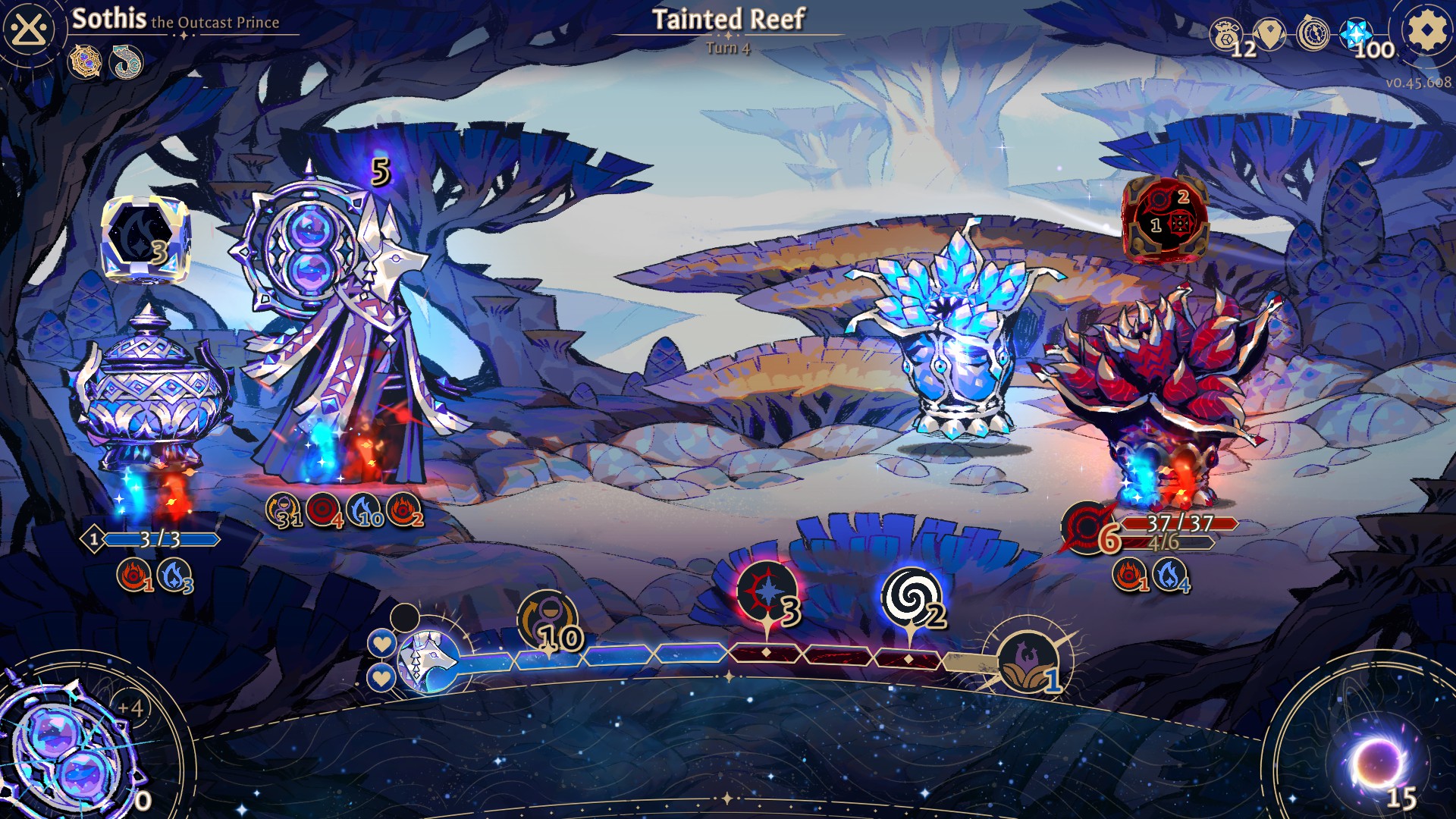
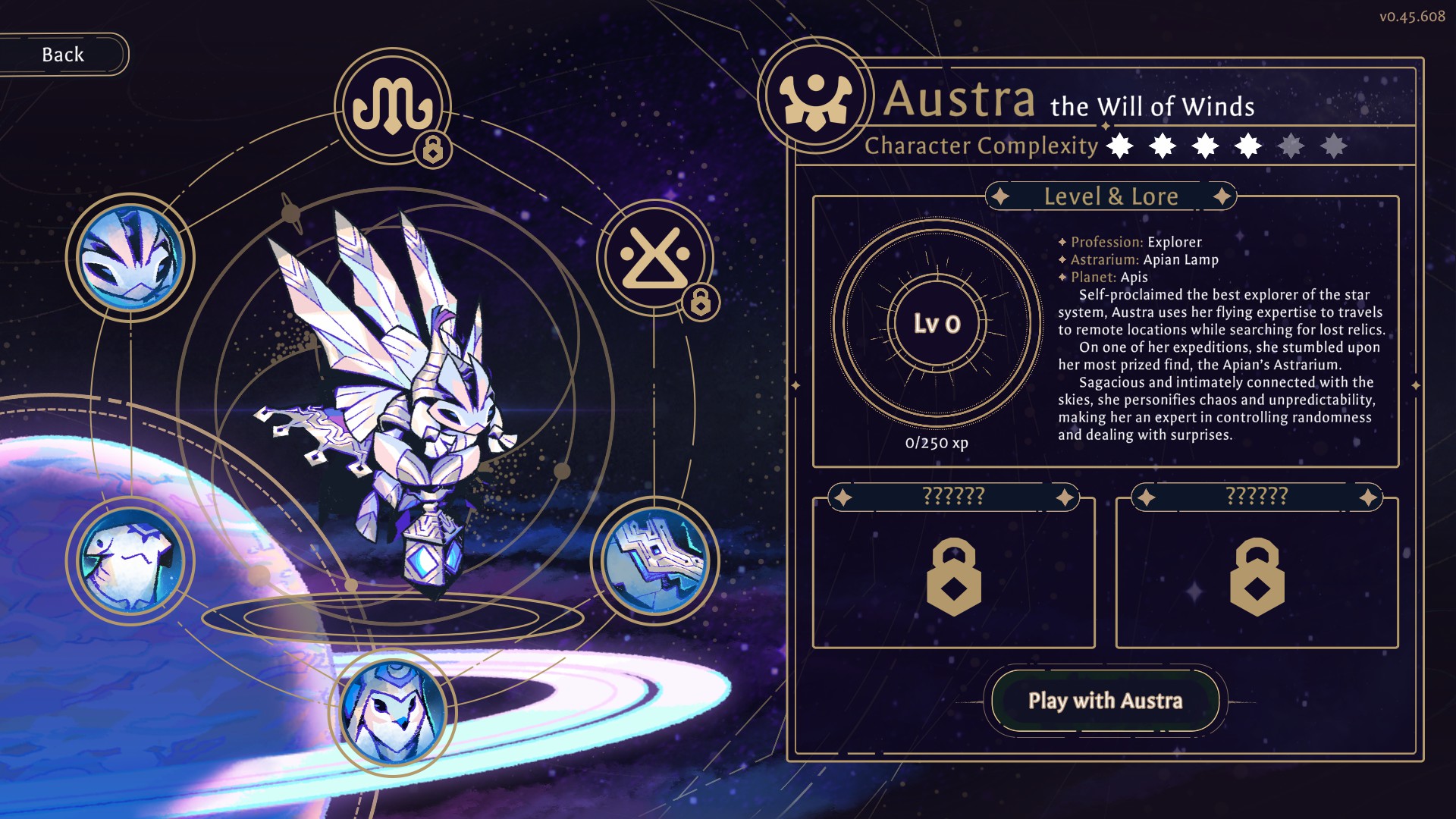
While I’ve had a great time with Astrea (and plan on rolling those bones more over the coming weeks), I often found getting a decent run off the ground frustrating, with a few too many attempts flummoxed by a few bad rolls during the opening fights. Easy come, easy go is the nature of gambling, and leveling up your character does open up some extra setup options. But I often felt things get easier towards the end, rather than harder—not the ideal challenge curve in a deckbuilder.
The interface could be a little clearer about how much purification or corruption an action is going to do after modifiers, too. I’ve lost lives a few times to upcoming damage that I thought was survivable being multiplied by items or status effects I forgot were in play. Something that can be mitigated by slower, more observant play, but it’d be nice to see the real numbers up-front.
But neither of these issues have dulled my enthusiasm for the game, and I cannot wait to unlock the sixth playable character and Astrea’s true finale. Just need to get that hot streak going one more time. All-in, double or nothing, no whammies—crocosage needs a new set of robes.
Despite a capricious early game, Astrea is a very pretty, refreshing & tense spin on the tried-and-true deckbuilder.

The product of a wasted youth, wasted prime and getting into wasted middle age, Dominic Tarason is a freelance writer, occasional indie PR guy and professional techno-hermit seen in many strange corners of the internet and seldom in reality. Based deep in the Welsh hinterlands where no food delivery dares to go, videogames provide a gritty, realistic escape from the idyllic views and fresh country air. If you're looking for something new and potentially very weird to play, feel free to poke him on Bluesky. He's almost sociable, most of the time.

